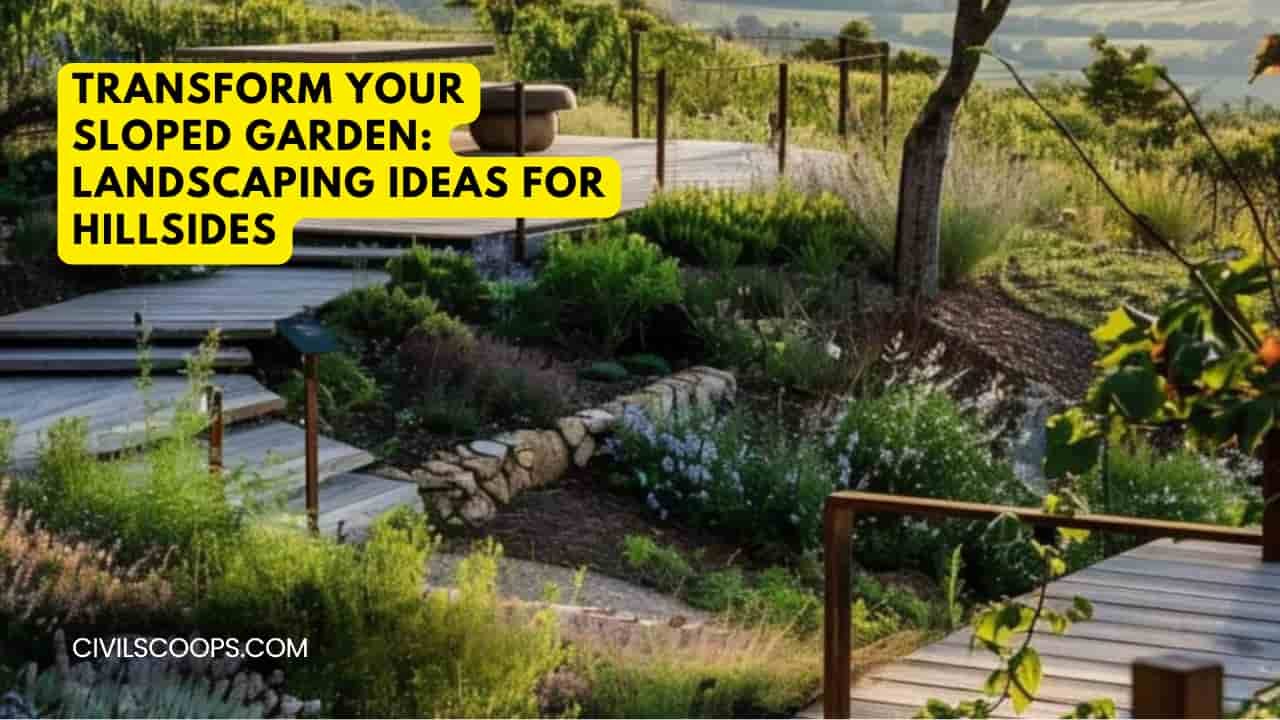Transform Your Sloped Garden: Landscaping Ideas for Hillsides
When faced with a sloped or hilly yard, landscaping can feel like a daunting task. However, with careful planning and creativity, you can transform a challenging slope into a stunning garden or outdoor retreat.
Whether it’s terraced landscaping or incorporating rocks into your design, hillside landscaping offers unique opportunities to create a breathtaking, layered outdoor space.
In this guide, we’ll explore various slope landscaping ideas to help you bring out the best in your garden.
Table of Contents
1. Embrace the Challenge of a Sloped Garden
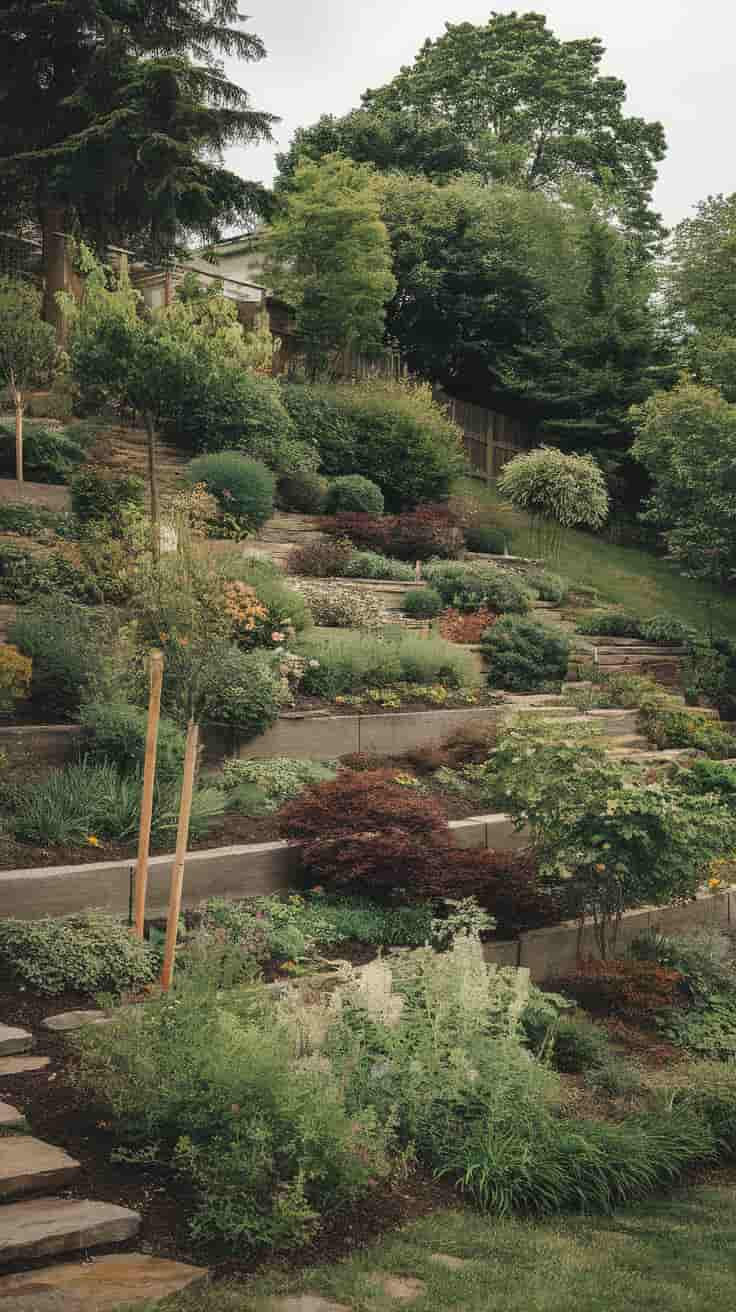
A sloped garden offers more than just challenges; it provides opportunities for dynamic and visually exciting design elements.
Hillside or slope gardening allows you to utilize vertical space, add depth, and create natural layers of greenery.
By combining plants, pathways, and retaining walls, you can turn a challenging area into a serene outdoor haven.
Key to a successful sloped garden is understanding your slope’s grade. The steeper the slope, the more erosion control and structural support it may require.
Proper water drainage and soil retention strategies will help ensure your garden thrives for years to come.
2. Slope Landscaping Ideas for Every Style

When landscaping a slope, think beyond the practical aspects and focus on aesthetics. Here are a few slope landscaping ideas to get you started:
- Terracing: Breaking up a slope into flat terraces creates level planting areas and adds structure. Use stone or wood retaining walls to build multiple levels, allowing for easy access and better water control.
- Curved Pathways: Create winding paths that follow the natural contour of the land. These pathways can be lined with flowering plants, grasses, or low shrubs, adding both functionality and beauty.
- Water Features: Adding a water feature like a small stream or waterfall can make great use of the natural slope and bring a sense of tranquility.
3. Designing a Garden on a Hill
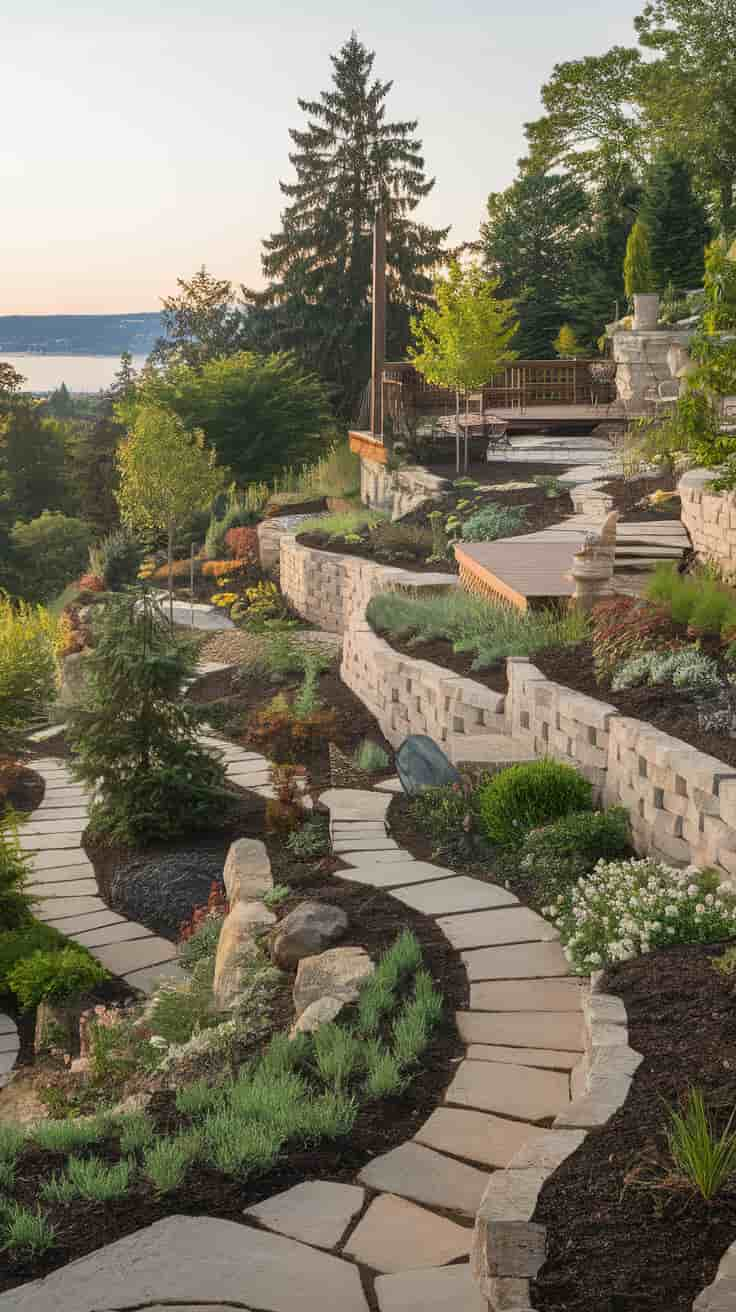
When designing a garden on a hill, you need to consider more than just appearance.
The practicalities of gardening on an incline—such as erosion, soil health, and water drainage—will dictate the plant choices and structural elements.
Opt for native plants with deep root systems to stabilize the soil and reduce erosion. These plants are adapted to local conditions and will require less maintenance in the long term.
Consider planting a mix of trees, shrubs, and ground cover plants for texture and to provide layers of interest.
4. Effective Hillside Landscaping
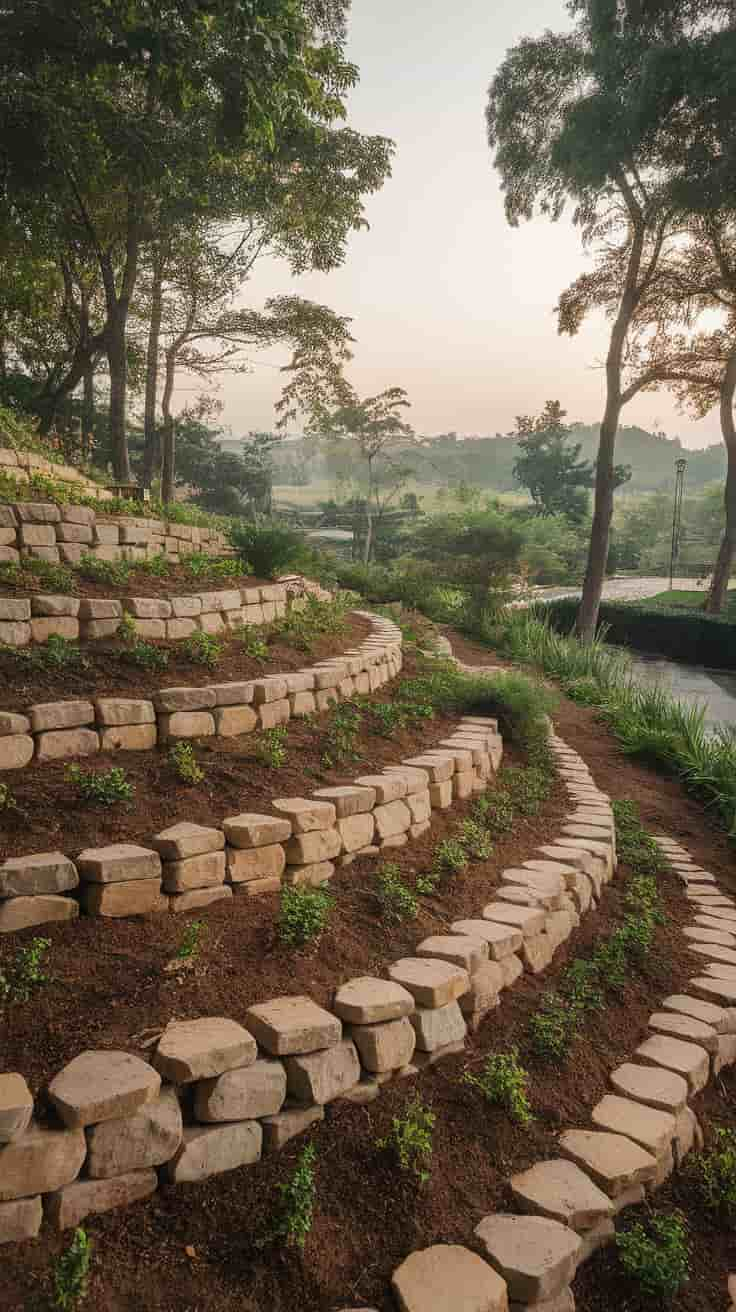
The key to hillside landscaping is balancing beauty with function. It’s crucial to manage water flow to prevent erosion and to select plants that will thrive in sloped conditions.
- Ground Covers: Ground cover plants like creeping thyme or vinca minor are excellent for controlling erosion on a slope. They spread quickly, providing a natural carpet that stabilizes the soil.
- Erosion Control: Using retaining walls, terraces, and plants with deep roots will help protect the slope from erosion. Strategic placement of rocks or boulders can also guide water runoff to prevent damage.
5. Innovative Hill Landscaping Ideas

For those facing extreme slopes, hill landscaping ideas can involve more creative solutions. Retaining walls are an excellent way to divide a steep hill into manageable planting areas.
These walls can be made from stone, timber, or even concrete and serve both aesthetic and practical purposes.
Incorporating a series of stepped terraces adds both visual interest and usability to your hill. On each level, plant different types of flowers, shrubs, and even small trees for a lush, layered look.
Small seating areas, patios, or outdoor dining spaces can also be added on the leveled areas for a more functional garden.
6. Steep Hillside Landscaping Ideas
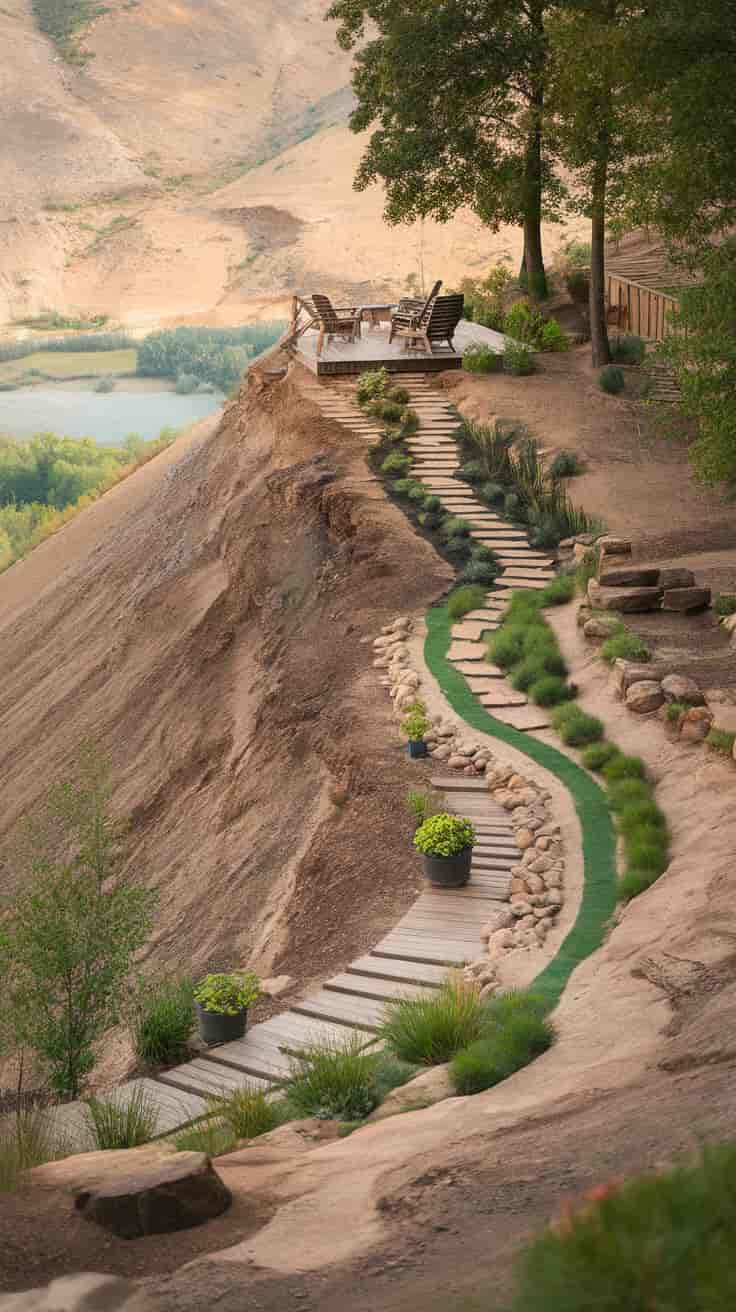
Landscaping a steep hillside requires a bit more planning and creativity. Steep hillside landscaping ideas often incorporate strong retaining structures to hold soil in place, as well as low-maintenance plants that can withstand difficult growing conditions. Here are a few ideas to consider:
- Boulder Walls: Large boulders can create natural-looking retaining walls and act as a strong barrier against erosion. They add a rugged, earthy feel to the landscape.
- Vertical Gardens: In tight or extremely steep spaces, consider vertical gardening methods, such as planting along walls or in hanging containers. This technique maximizes planting space without taking up a lot of ground area.
7. The Art of Terraced Landscaping
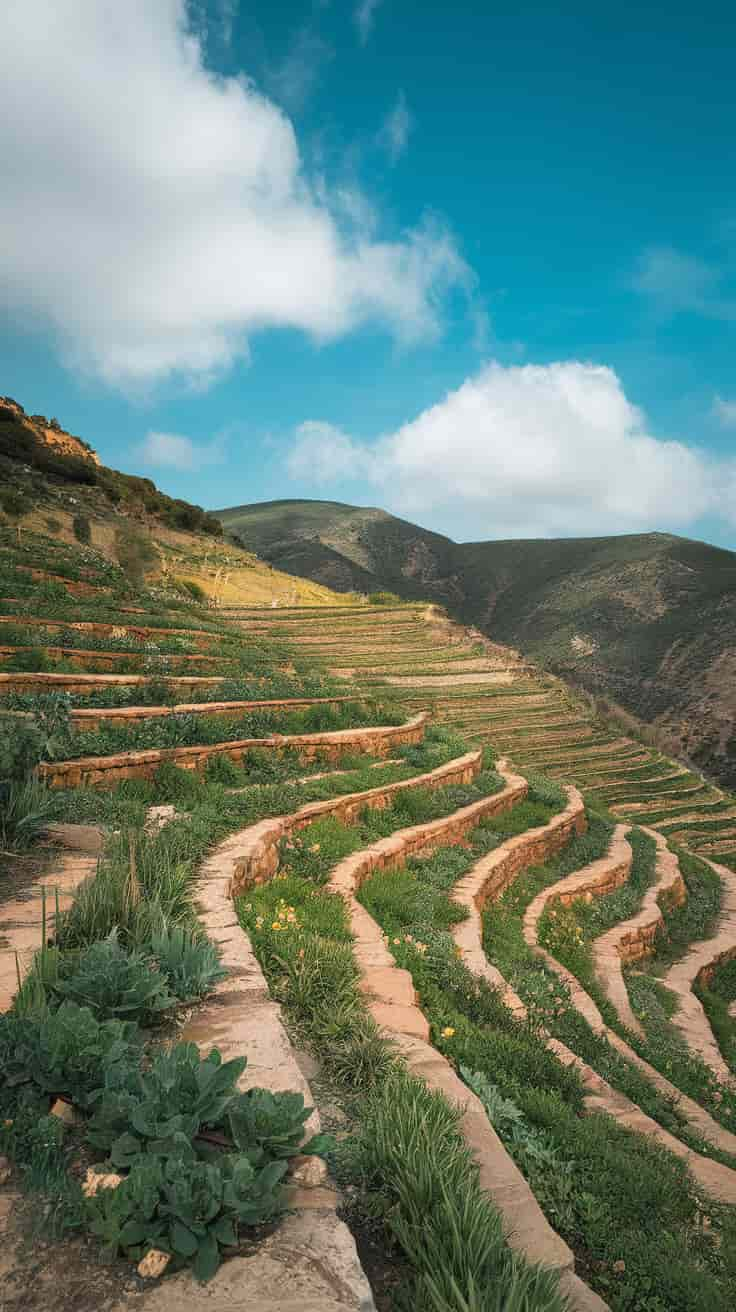
Terraced landscaping is one of the most popular solutions for sloped yards. It involves cutting flat areas, or terraces, into a hill to create planting beds or pathways.
Not only does this prevent erosion, but it also creates usable, level spaces for plants, seating, and decorative features.
- Stone Retaining Walls: For a natural look, use stone retaining walls to hold each terrace in place. Plants such as ferns, succulents, or grasses can be tucked between the rocks to soften the look.
- Staircase Pathways: Use staircases between terraces to make it easier to navigate the different levels. These pathways can be as simple as gravel or more elaborate, like stone steps.
8. Sloped Yard Landscaping
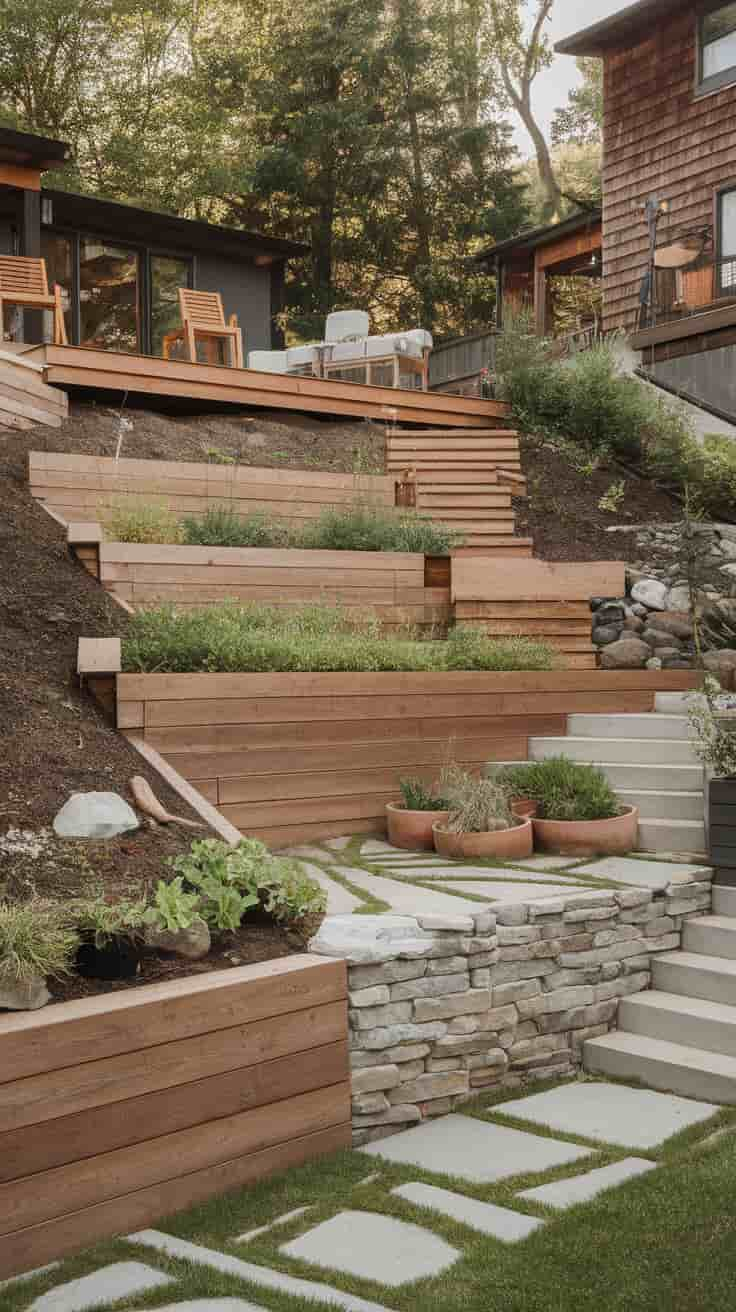
If you’re dealing with a sloped yard, incorporating a mix of hardscape elements (like stone walls and pathways) with softscape features (like plants and trees) will create a balanced design.
Low-maintenance perennials and ornamental grasses can add texture, while shrubs and trees will provide shade and structure.
Consider integrating a water feature such as a cascading waterfall, which naturally fits into the slope and enhances the calming vibe of the space.
9. Steep Slope Landscaping Solutions
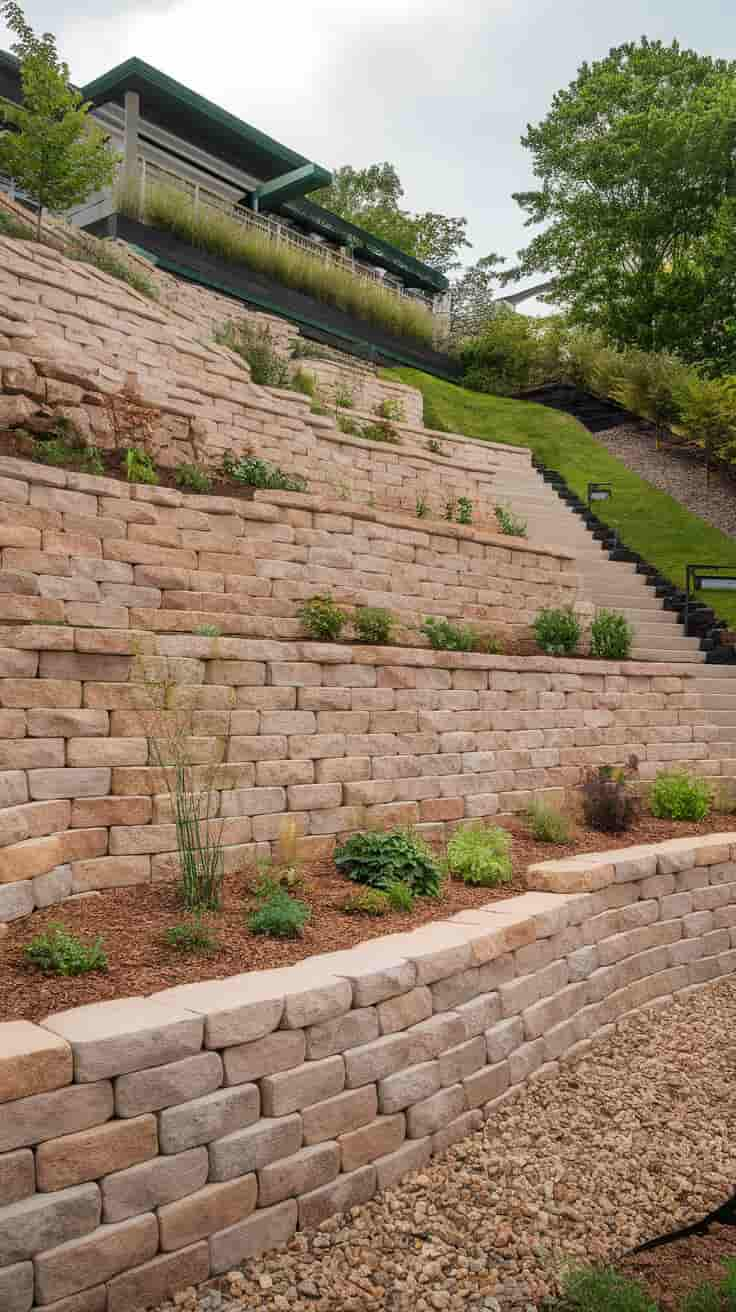
When addressing a steep slope, look for plants and landscaping techniques that will reduce erosion and create visual interest. Opt for drought-tolerant plants with strong roots, such as lavender, sage, and ornamental grasses, which will help anchor the soil.
Also, consider planting in clusters rather than in straight rows. This helps maintain the natural flow of the landscape while encouraging plant growth to cover exposed soil.
10. Landscaping Slopes with Rocks
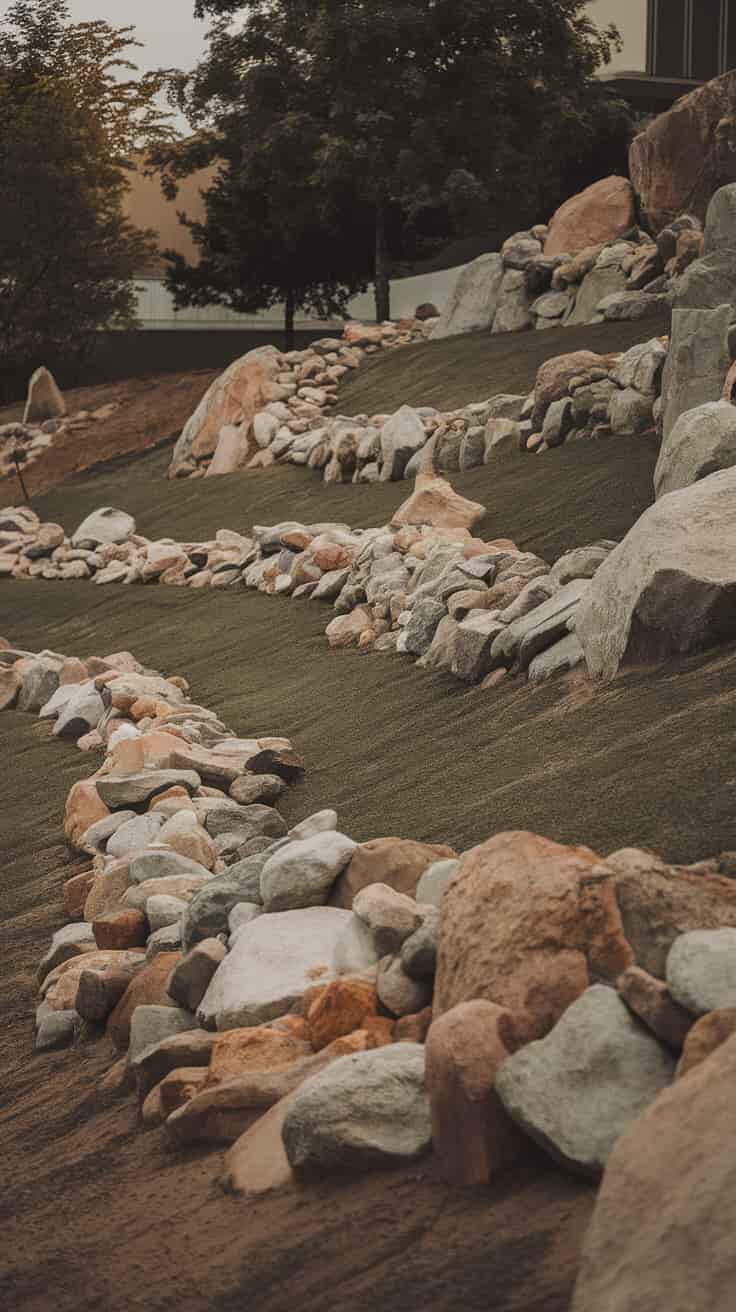
One of the most effective ways to stabilize a sloped garden is by landscaping slopes with rocks. Rocks add both aesthetic appeal and practical benefits, as they help prevent erosion and provide a natural drainage system.
- Rock Gardens: Use rocks to create a naturalistic garden. Succulents, alpine plants, and other drought-tolerant species thrive in rock gardens, making them a beautiful and sustainable solution.
- Dry Creek Beds: A dry creek bed made from rocks can channel water away from delicate plants and prevent erosion. Line the creek bed with smooth river rocks or boulders for a more polished look.
Like this post? Share it with your friends!
Suggested Read –
- Best Plant Room Ideas for Indoor Gardening
- How to Care for Snake Plants: The Easiest Indoor Plant
- How to Create a Spiritual Garden for Meditation and Reflection
- How to Create a Tuscan Garden: Elegant and Rustic Design Tips
- Fresh Flower Arrangements: Brighten Your Home with Lively Blooms
Conclusion
Landscaping a slope or hillside can seem overwhelming, but with the right planning and creative ideas, it can become a beautiful and functional part of your outdoor space.
By using techniques such as terracing, planting ground covers, and incorporating rocks, you can transform a sloped garden into a thriving landscape.
Whether you’re creating a garden on a hill or tackling a steep slope, the possibilities for hillside landscaping are endless.
Originally posted 2024-10-18 07:40:49.

